How to sneak up on a painting
Kevin Kelly shares his approach making art that surprises him in this talk-turned-essay. His solo exhibition “If I Had It to Do Over Again” is on view at the Birger Sandzén Memorial Gallery in Lindsborg through July 21.
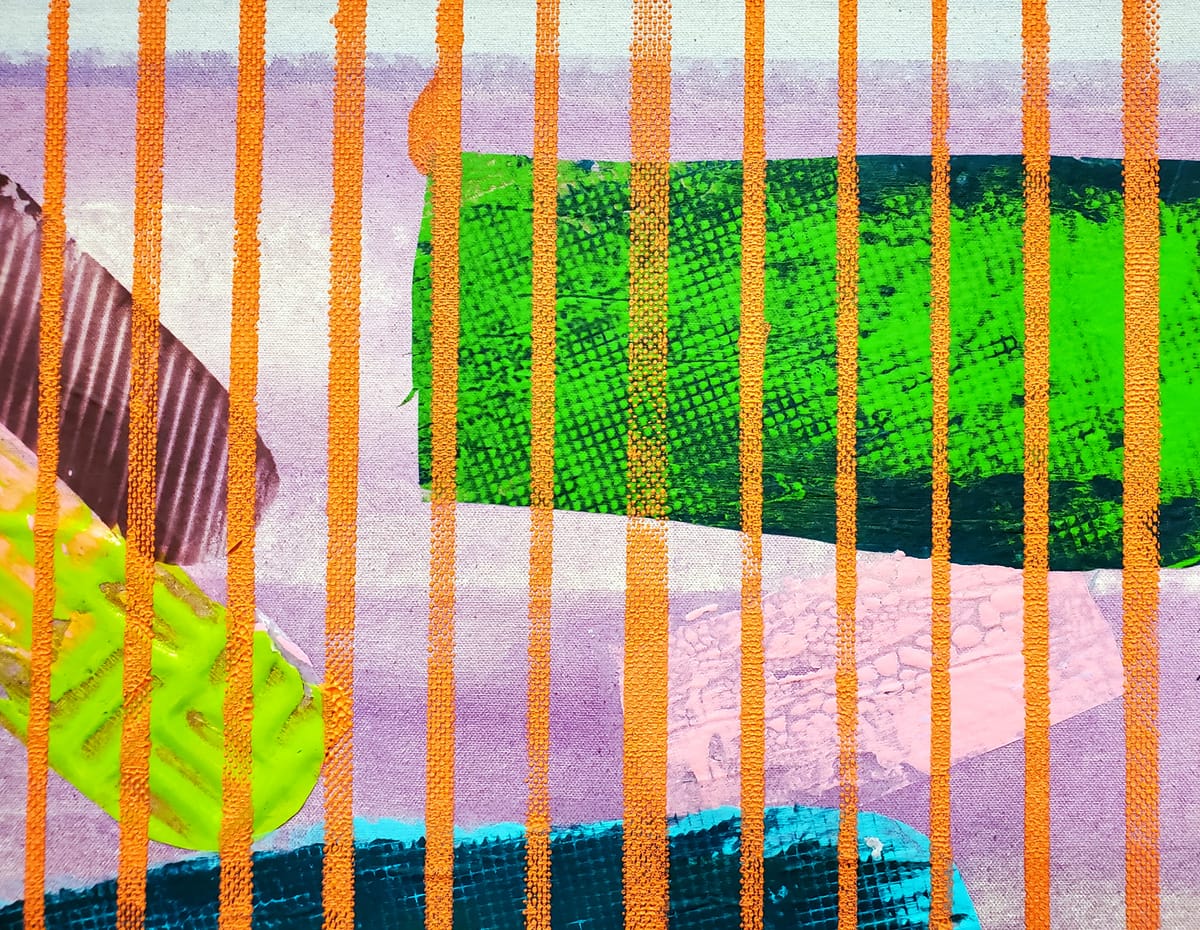
Kevin Kelly has a stockpile of tips and tricks for navigating the creative process to arrive somewhere new. In the following essay, he spills all his secrets.
“There are traditional ways of building layers of a painting, but I like to shuffle the deck a little bit and say, what if I did it in this order instead?” he explains. “Ultimately, I want to be surprised in the process. I want it to take me somewhere else.”
It’s not the most efficient way to make a painting, he admits. But in the “wrestling along the way,” he finds a more interesting destination.
"How to Sneak up on a Painting" is based on a talk Kelly gave on April 12 for Art Chatter, a Wichita Art Museum program. Many of the images that illustrate the essay are different in-process views of “Here Forever, Gone Tomorrow,” one of the works on view in “If I Had It to Do Over Again,” at the Birger Sandzén Memorial Gallery in Lindsborg, Kansas. Find details about the exhibition at the bottom of the page. —Emily Christensen
Our free email newsletter is like having a friend who always knows what's happening
Get the scoop on Wichita’s arts & culture scene: events, news, artist opportunities, and more. Free, weekly & worth your while.
No spam. Unsubscribe anytime.
My name is Kevin Kelly, and I am addicted to paintings.
One thing that art schools and YouTube tutorials will not teach you: Paintings are not objects that are made — they are a fix that you have to sneak up on. The following is my advice for sneaking up on a painting.
It’s only 18 steps long.
#1 Walk
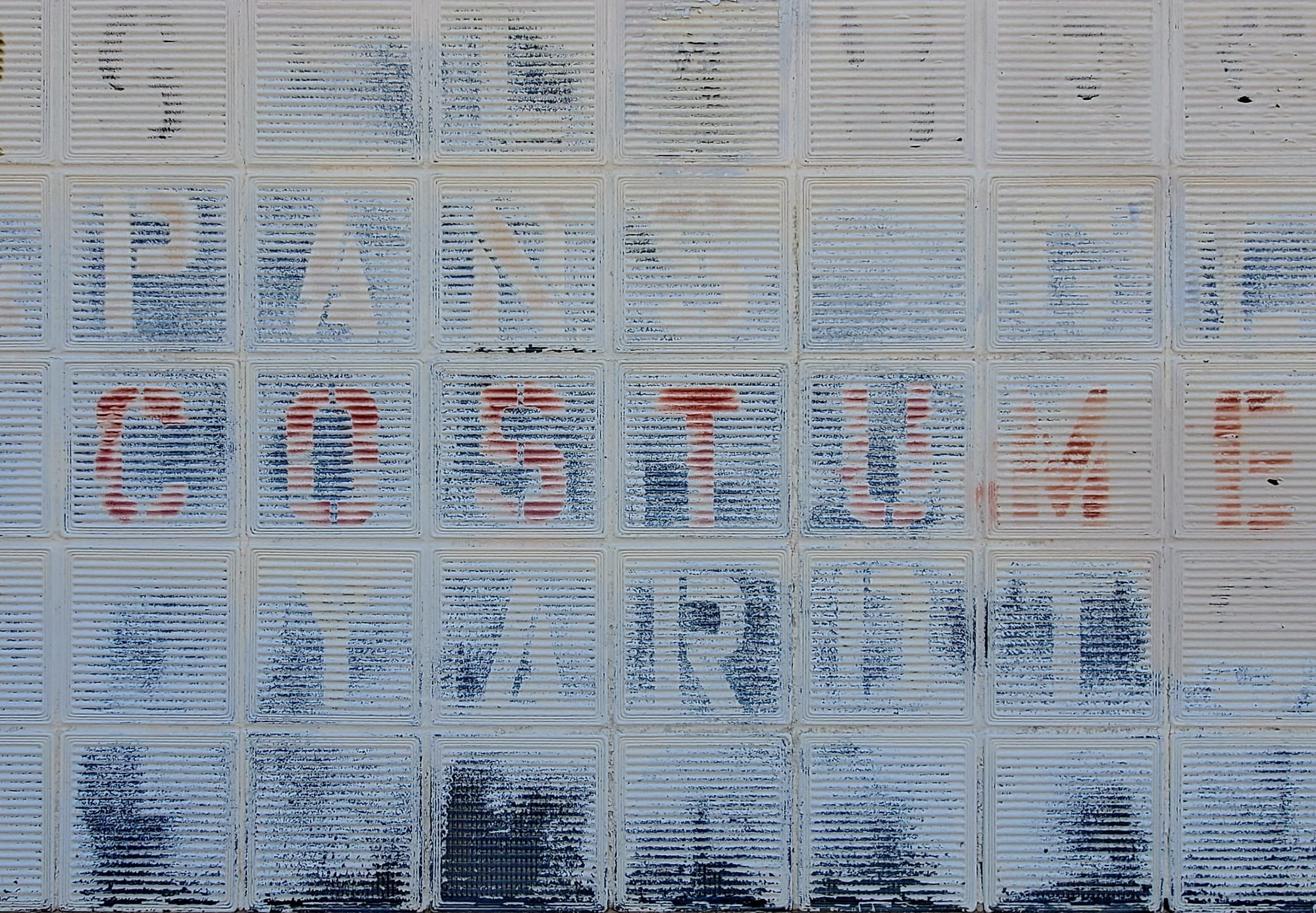
To sneak up on a painting, take a long walk. Take a lot of pictures. These aren’t references, but evidence — of time and movement and energy. What gets left behind?
Is this procrastinating? Don’t worry. Don’t ask.
#2 Collect
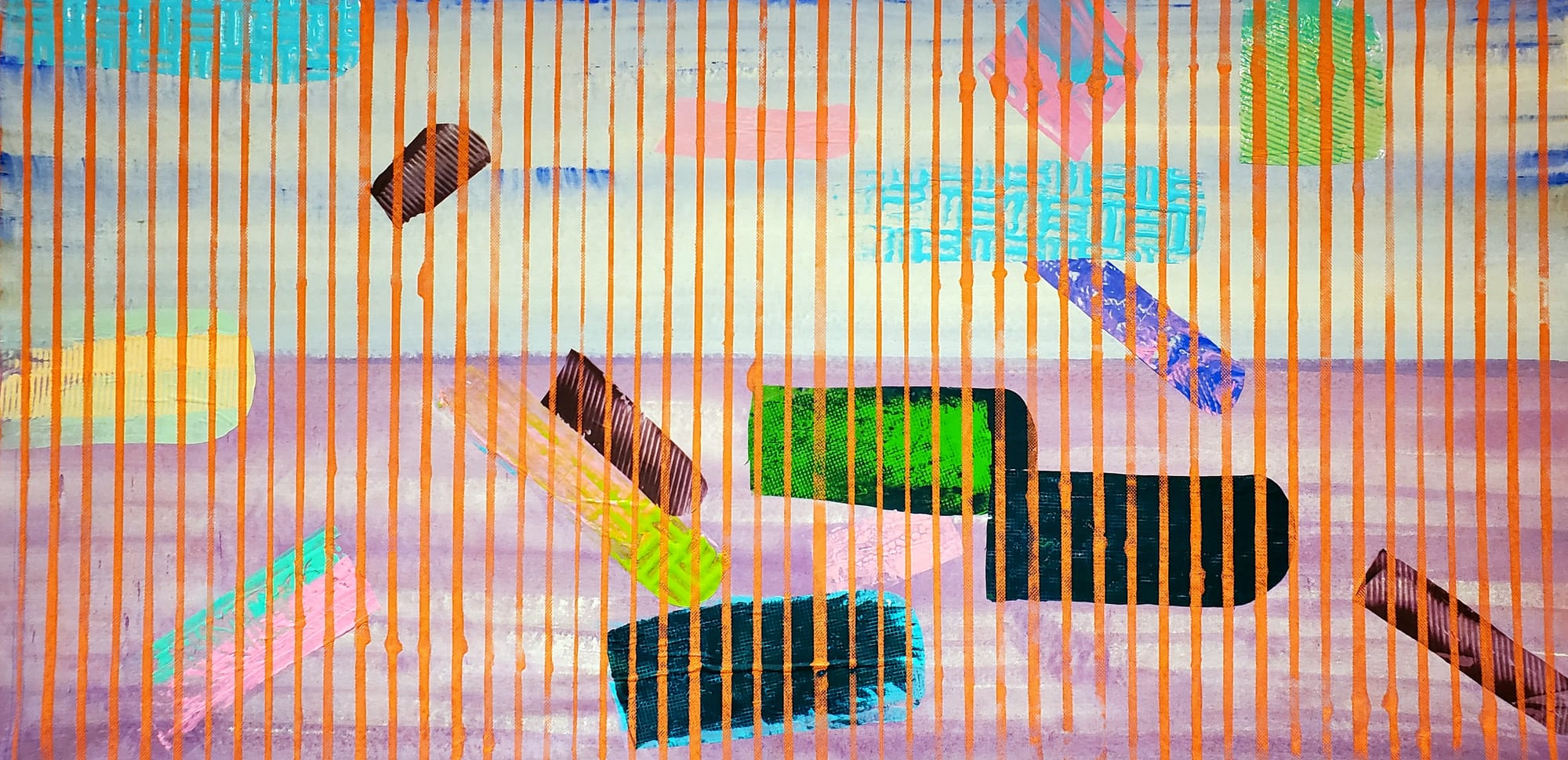
To sneak up on a painting, collect color samples, color combinations, textures, harmonies, discords.
Re-order your studio space. Think about energy flow, available space and light, the small knick-knacks that remind you of why you are there.
Is this procrastinating? Don’t worry. Don’t ask.
#3 Sketch
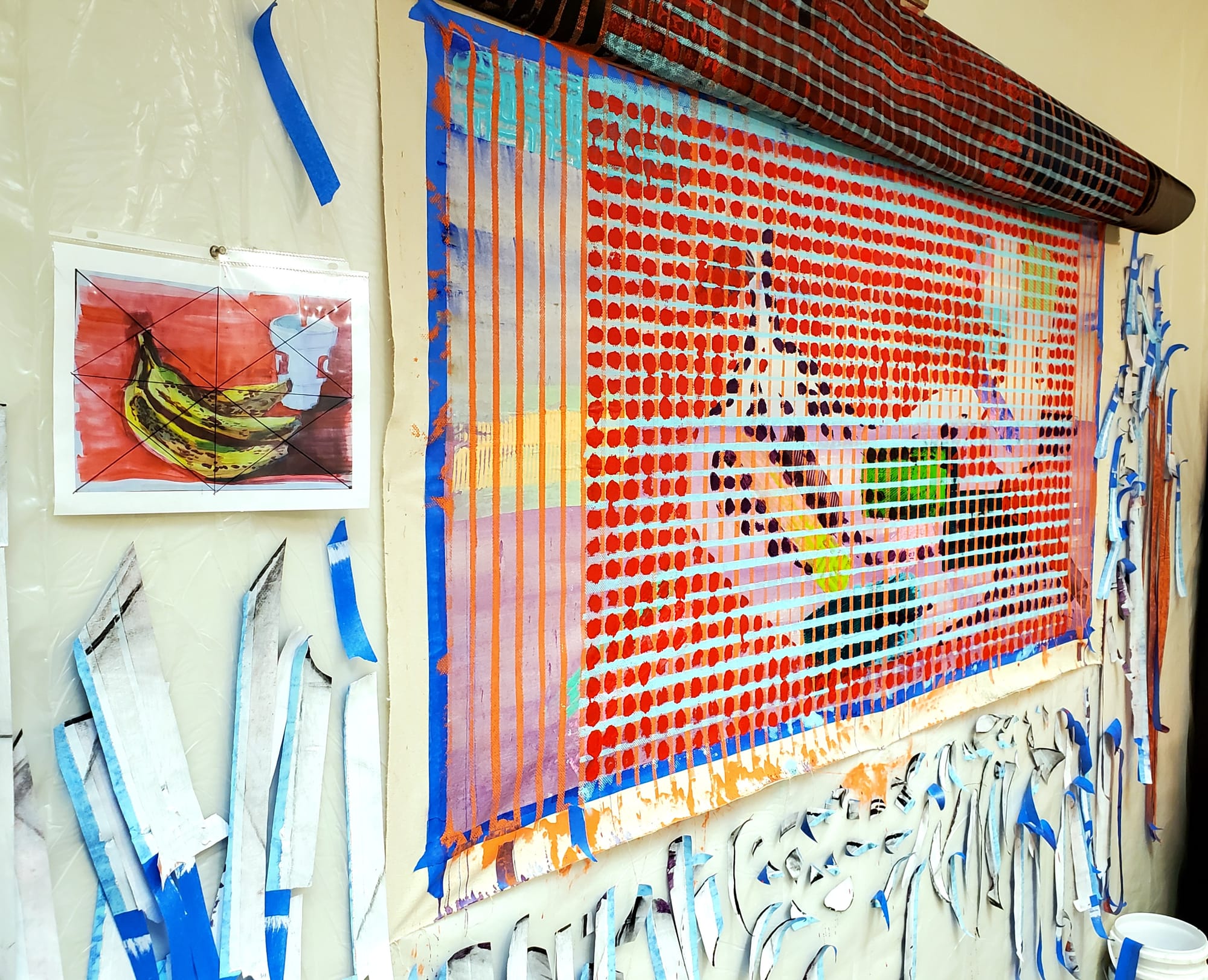
You gotta sketch. But convince yourself that the sketch is not the thing. It is fluid. It’s like that long walk — evidence of time and movement and energy. What gets left behind.
#4 Program
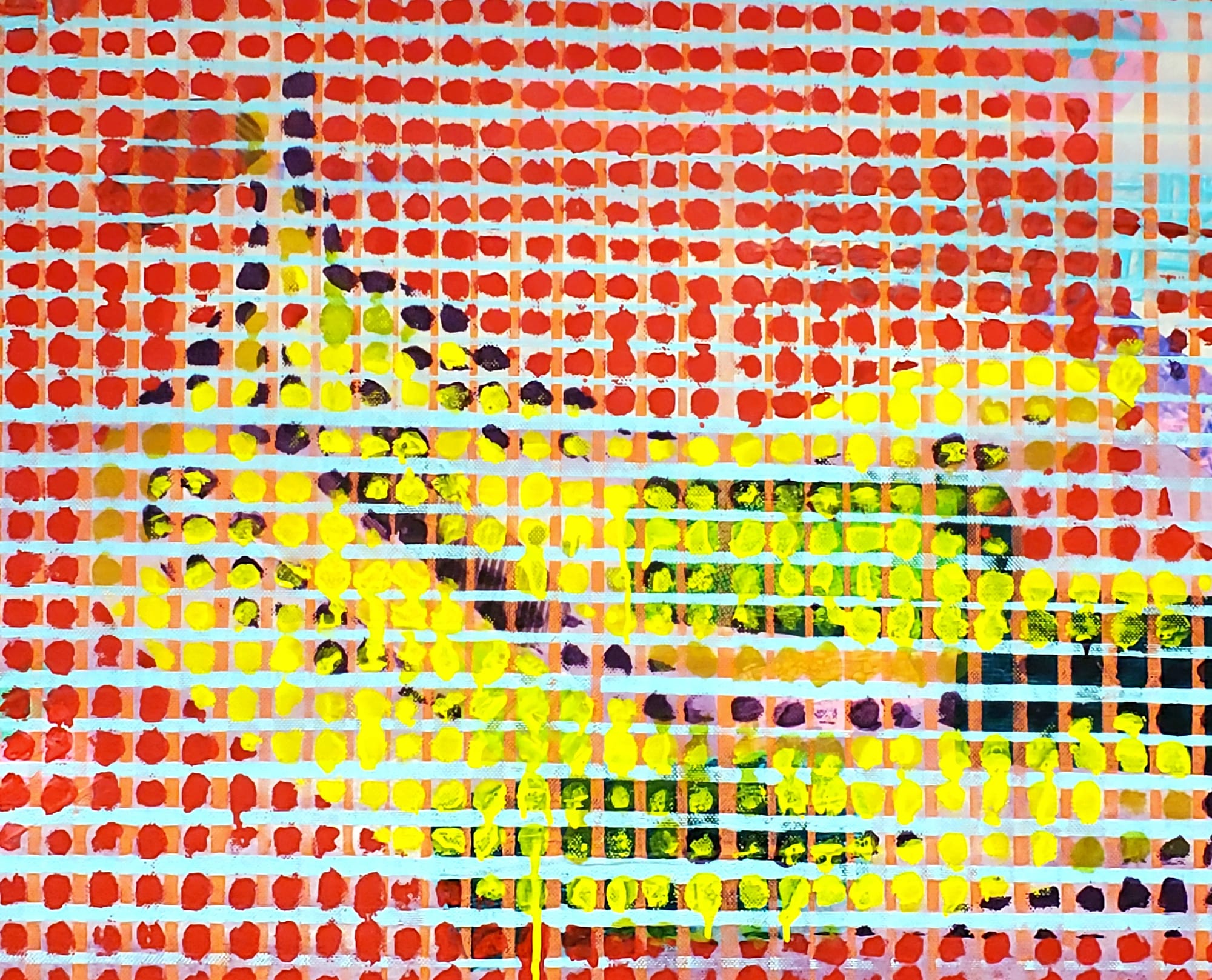
In order to sneak up on a painting, create barriers between you and your work: barriers that you will have to work through, barriers that will initially keep you from direct interaction with your work. Program the algorithm, play the game according to the way you move in the world.
Forget freedom.
#5 Limit
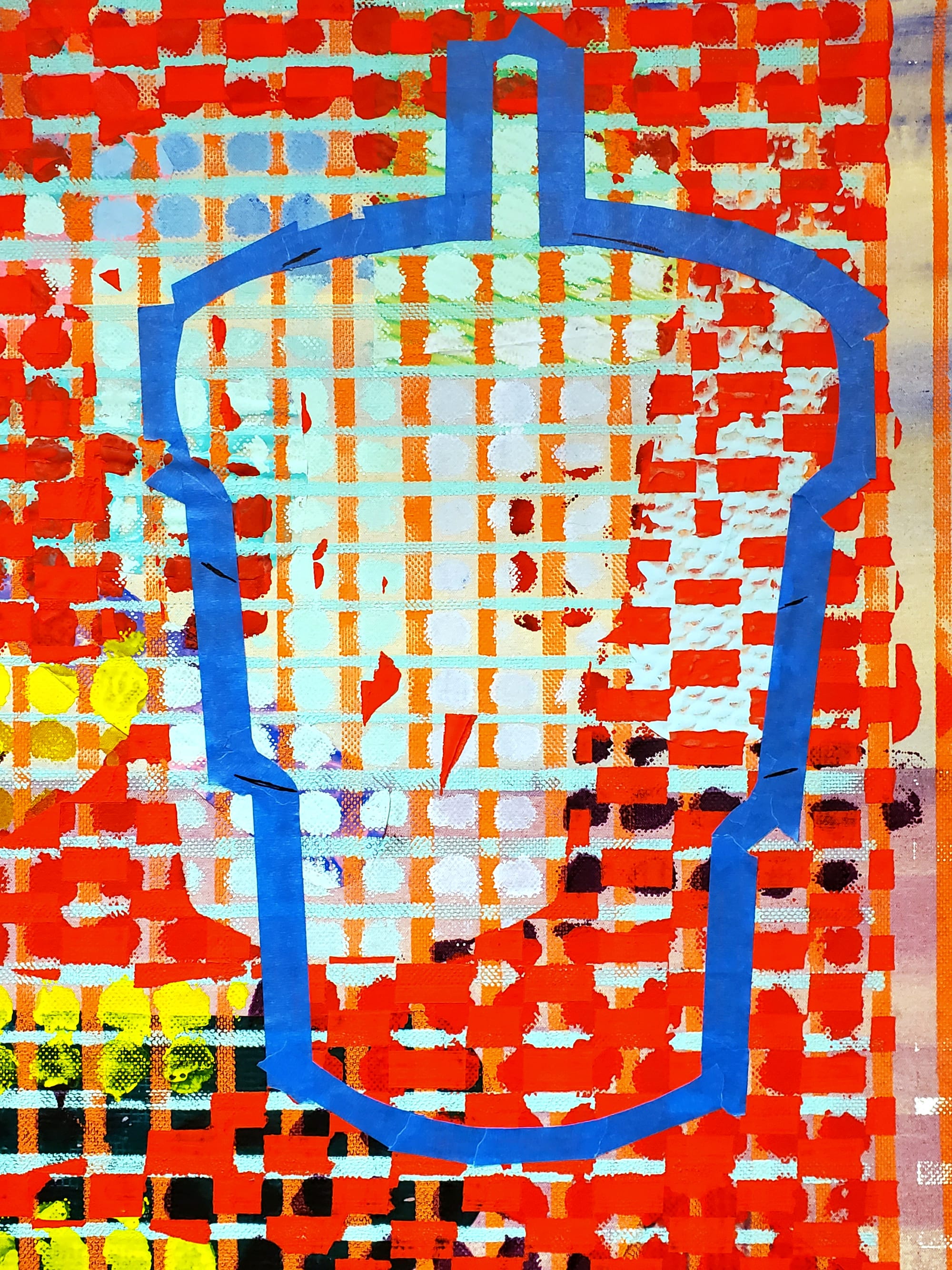
You must limit, limit, limit. Remind yourself that a painting is not about freedom but a collection of limits.
Don’t hide these choices — let other people in on the game. This wrestling between you and your painting might be more important than the finished work.
#6 Look
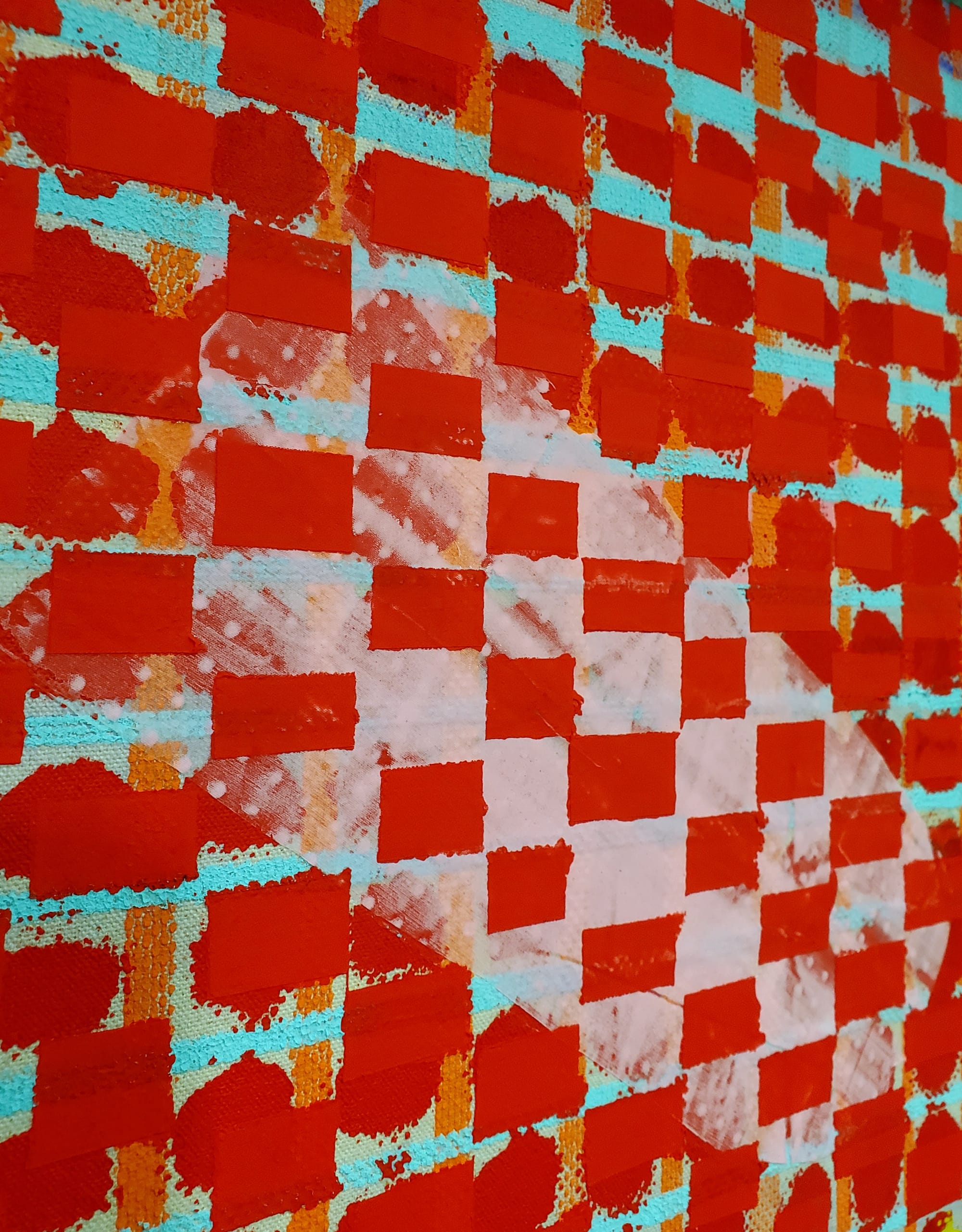
To sneak up on a painting, use mirrors, photos, doodles, sideways views — any view that will give you fresh eyes, an objective view. Squint, take off your glasses, but look. Somehow, look without staring.
#7 Stare
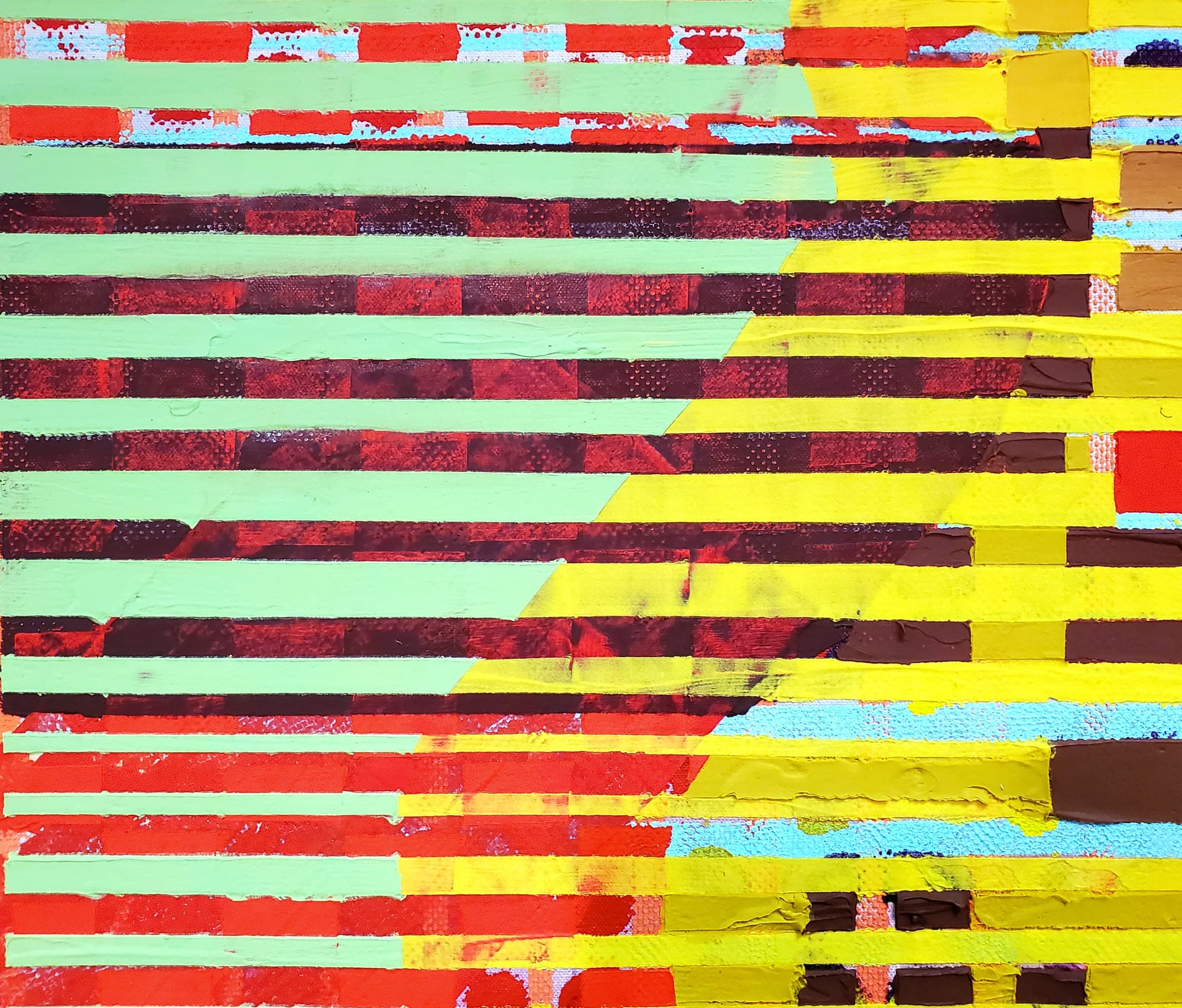
You gotta stare. Stare until you are looking through the thing, until it starts to vibrate, until you are pushing forward towards it with your guts! Are you dissolving this thing, or is it dissolving you?
#8 Build
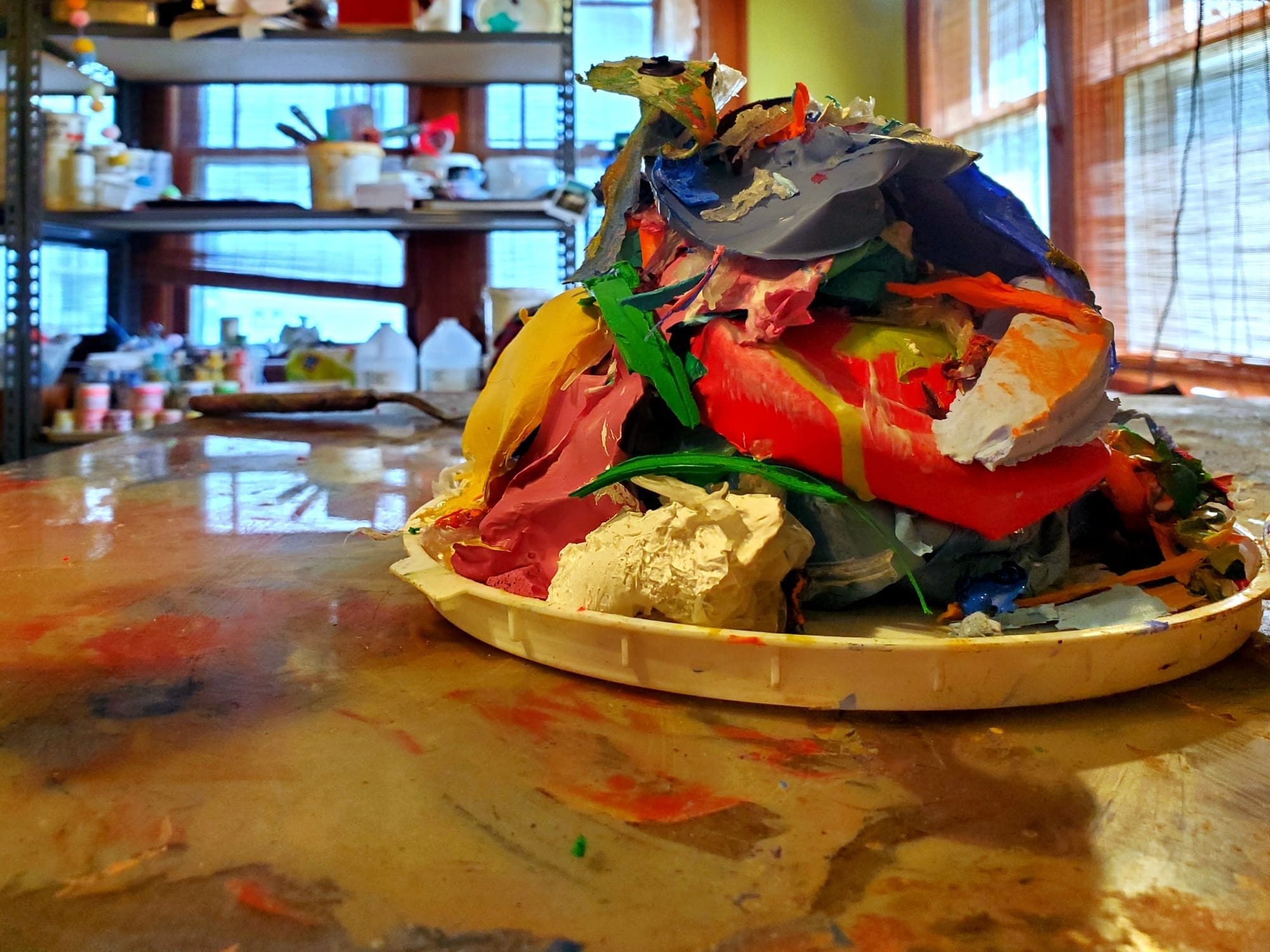
Start a side practice. Make sure it is not useful. Build sculptures that you will not show to anybody. Build collections that are useless. Start bands that will never perform publicly. Write songs for your fake band. Design merchandise.
Is this procrastination? Don’t ask.
#9 Talk
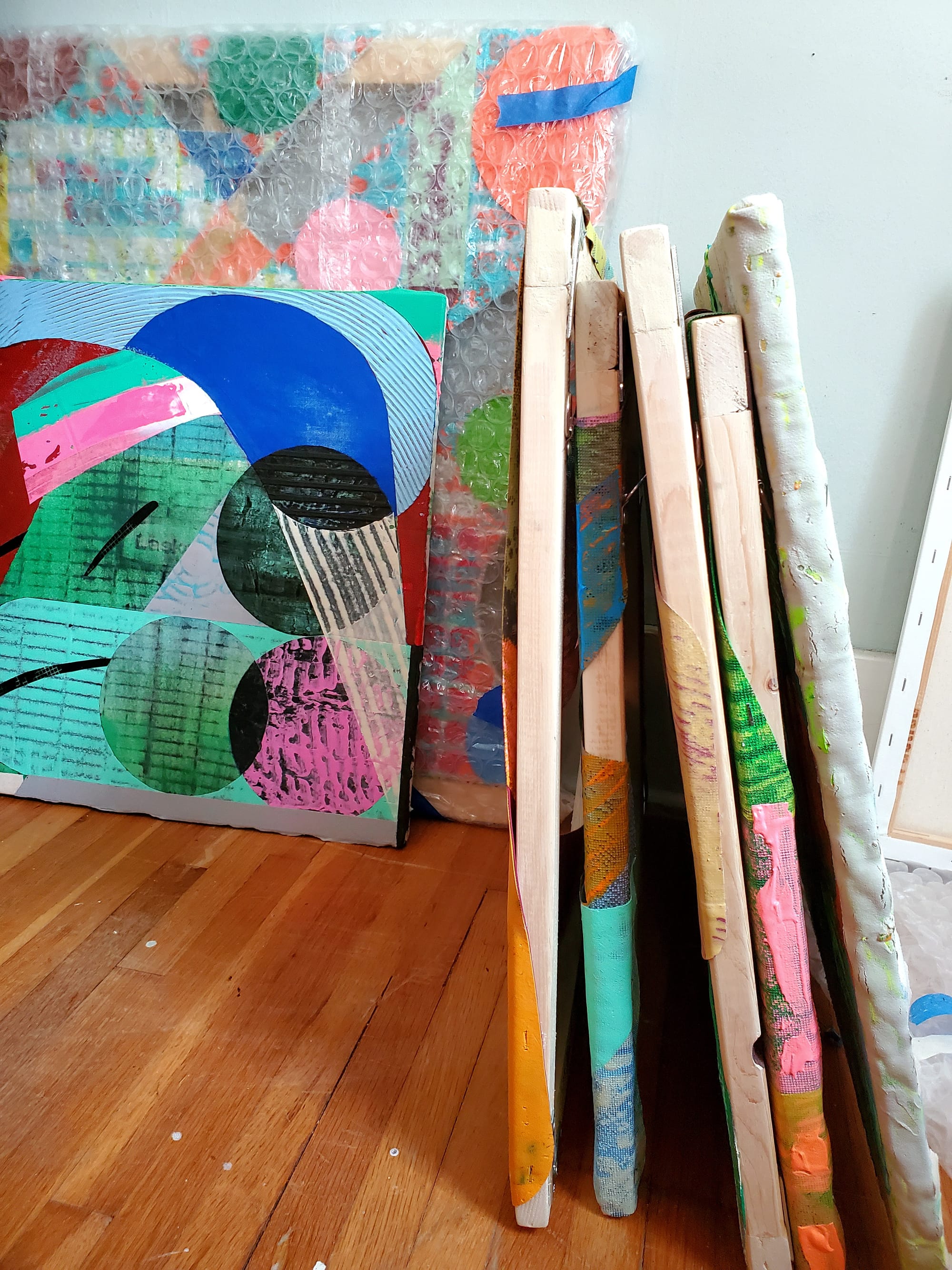
Start a second painting. Then a third. Create a community. Let them talk to each other, then talk to you. Let them outnumber you and boss you around. They will form a consensus, they will hold you accountable, they will vote you out of office.
#10 Break
Put your painting away. Breathe. Reunite after a few weeks, months, whatever. Get reacquainted. Think about how you have changed, how your painting has changed. Make a new move to mark this change.
Was this procrastination? Not at all.
#11 Teach
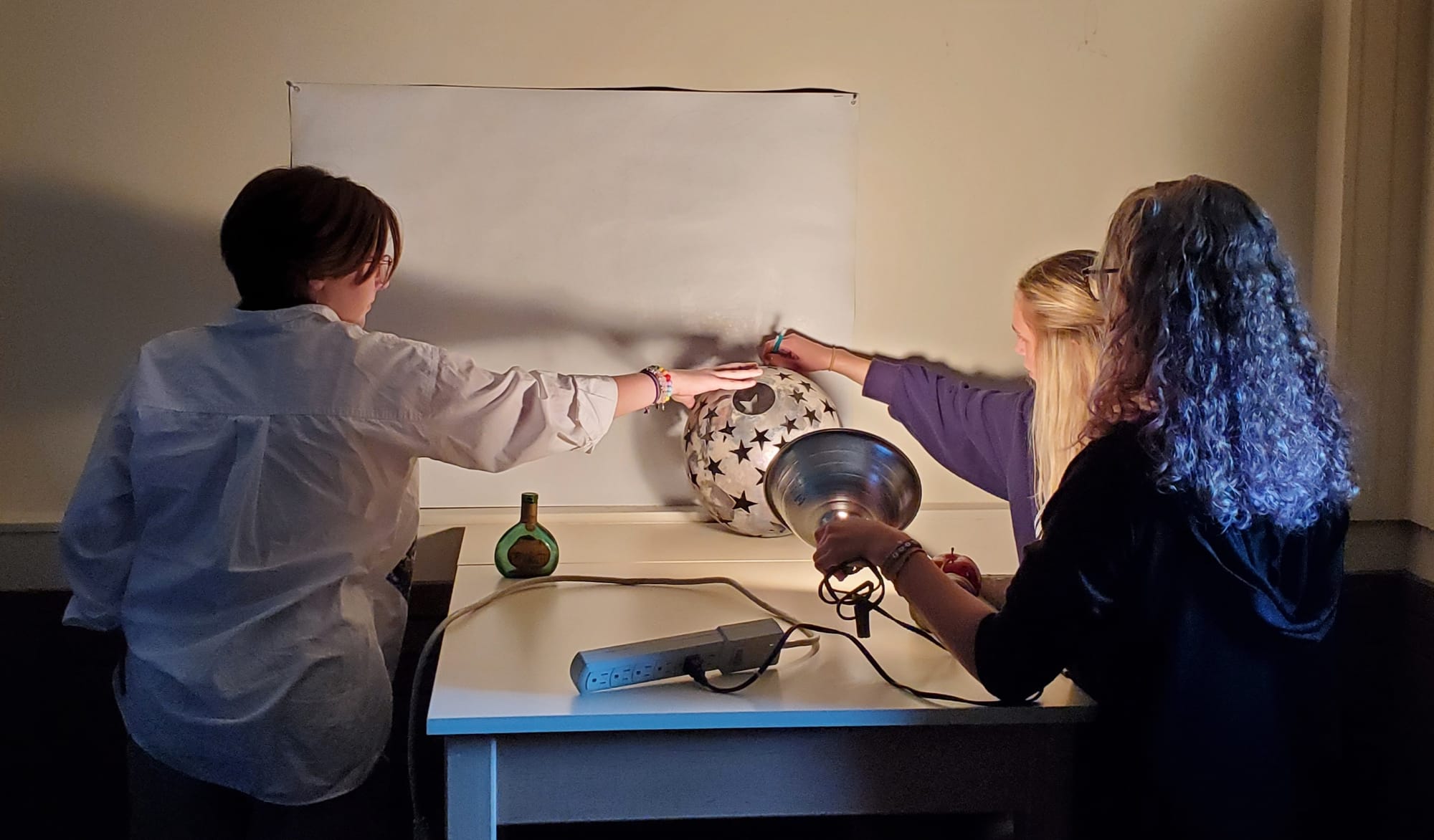
Teach someone else what you know. Most of teaching is convincing yourself that something is true. Say out loud all the strange messages you keep in your own head. Until they sound normal, real, believable.
#12 Vibe
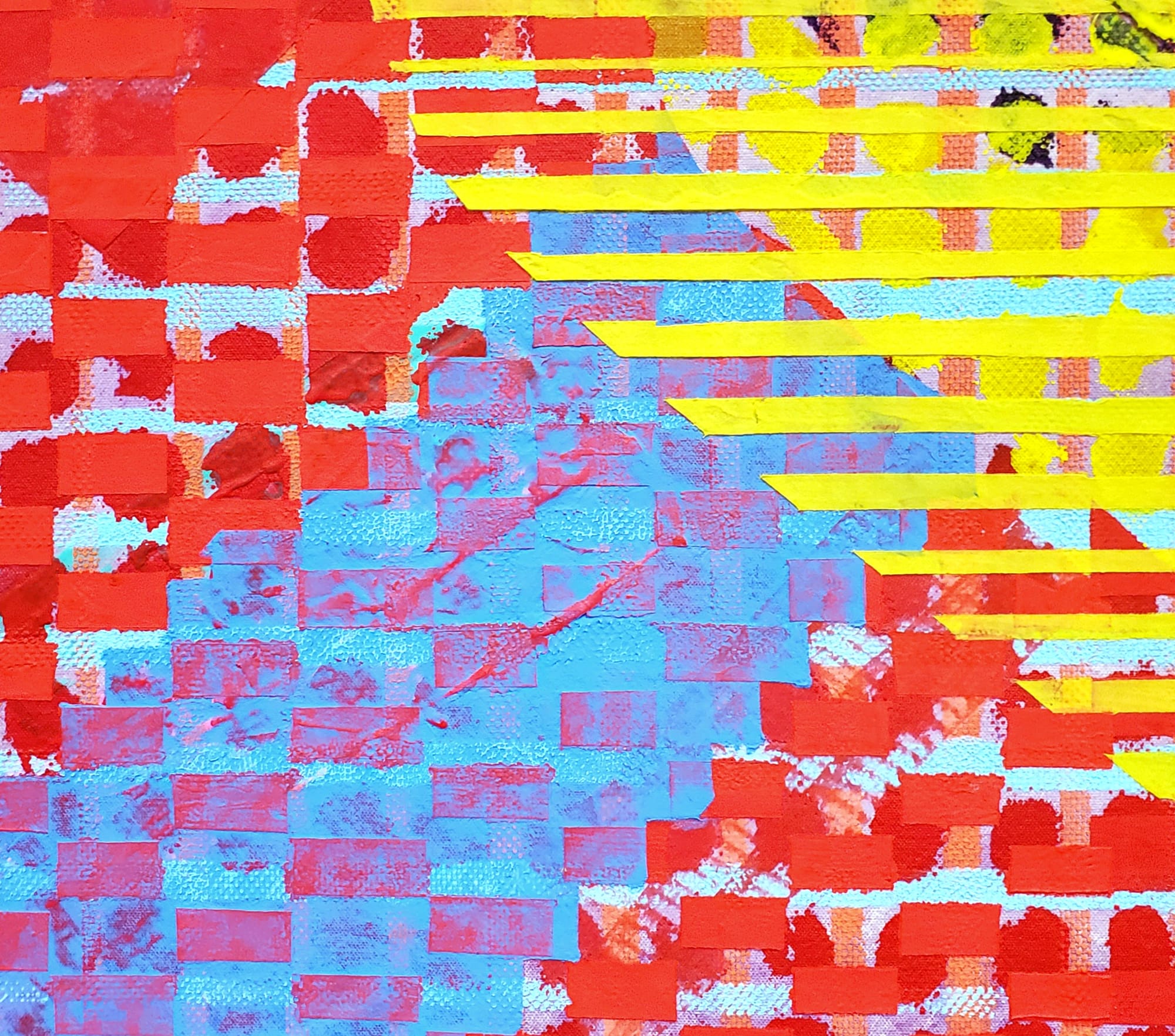
To sneak up on your painting, pay far more attention to what the painting does to you than what it means.
Look for direction in another art form: music, dance, poetry. Watch how these things move you without explaining themselves.
#13 Document
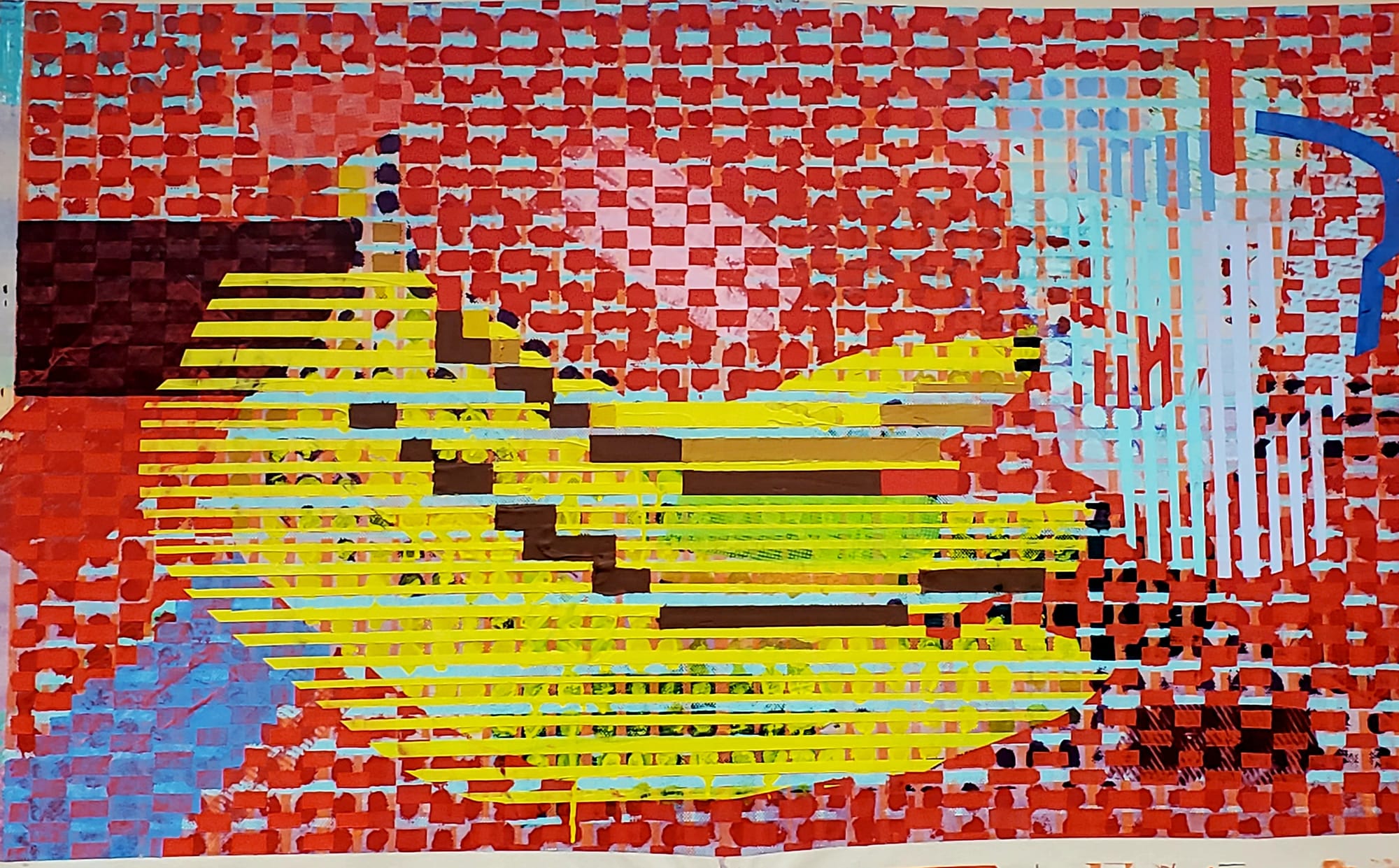
You gotta keep a running list of cold facts. Dates that you started. Dimensions. Materials used. Log every minute you work, with dates. These facts will keep you grounded during your irrational journey. They will be invaluable later when you need to tell the story.
#14 Watch
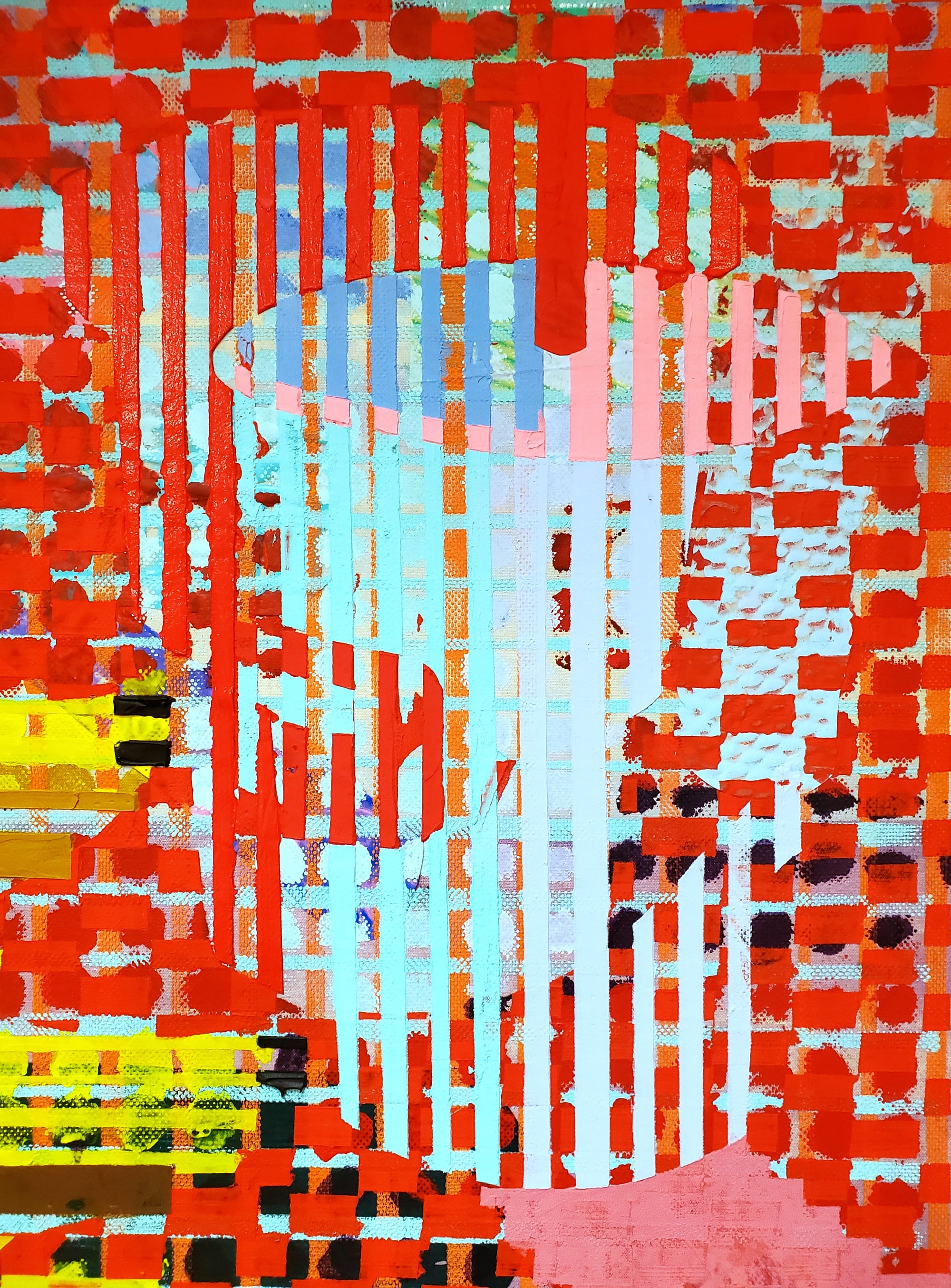
To sneak up on your painting, spend time in front of it every day. Let it know that you are watching, even if you are not actively making. You are matching up your internal vibrations. You are accepting its limitations. You are plotting its replacement.
#15 Remember
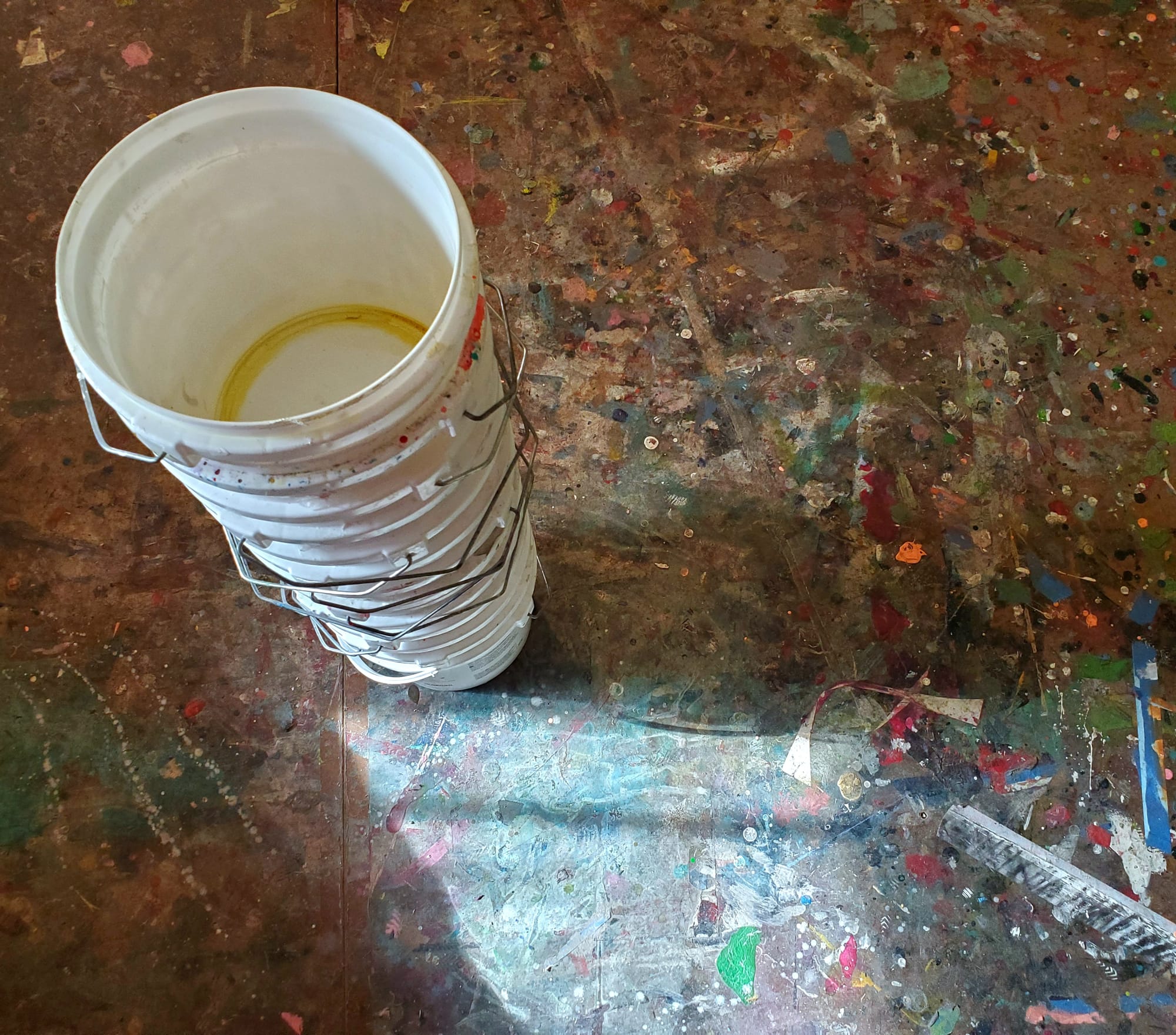
Remember that inanimate objects will never take care of you, only demand things from you. Remember to eat good food, to stretch and exercise. Rest. Drink water. Breath fresh air and feel the sunshine. Take a walk.
#16 Wake
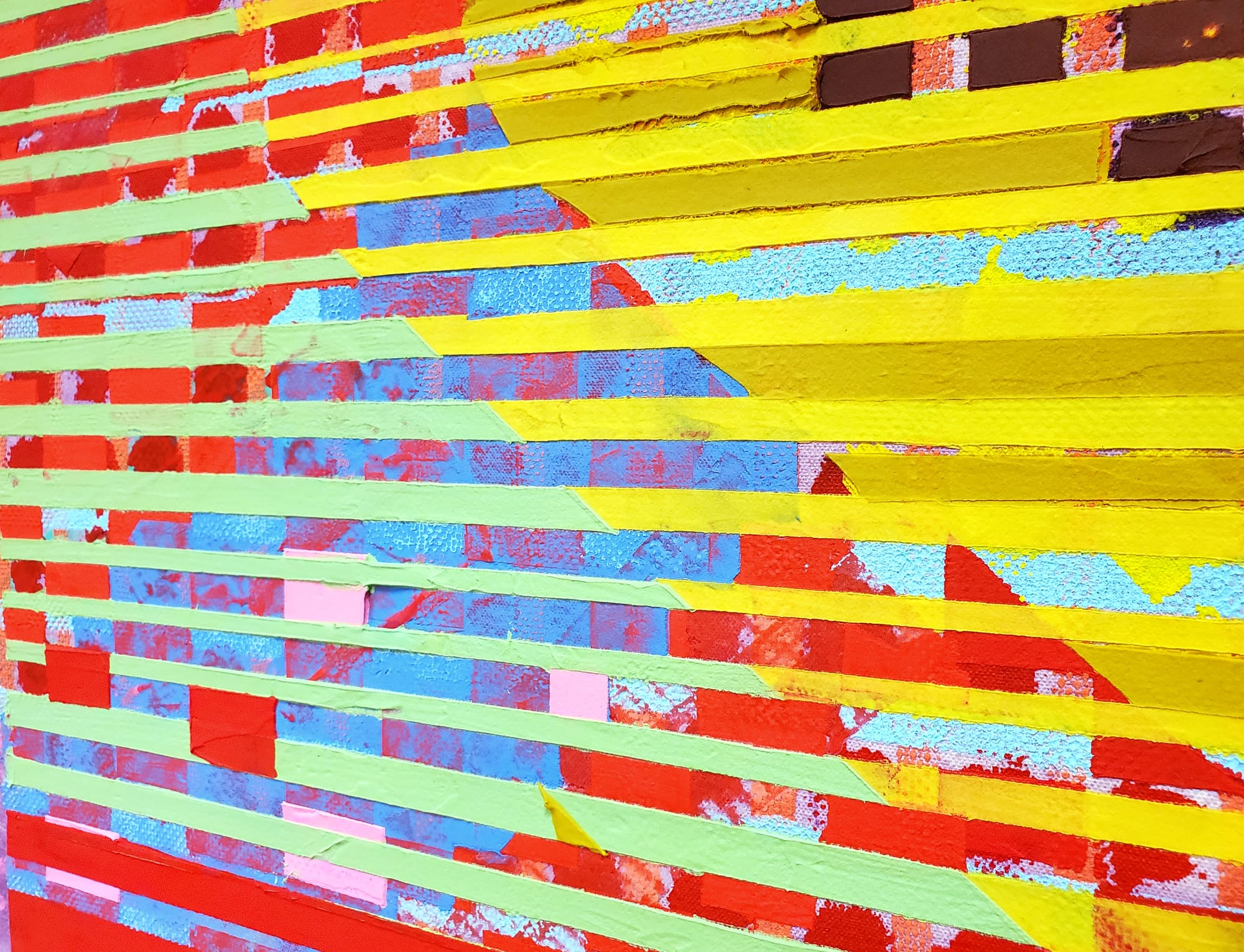
To sneak up on a painting, wake up far too early. See your painting in pre-dawn light. Stay up too late and spend some spooky time with your painting. Does it look the same? What moves does it demand at irrational times?
#17 Insist
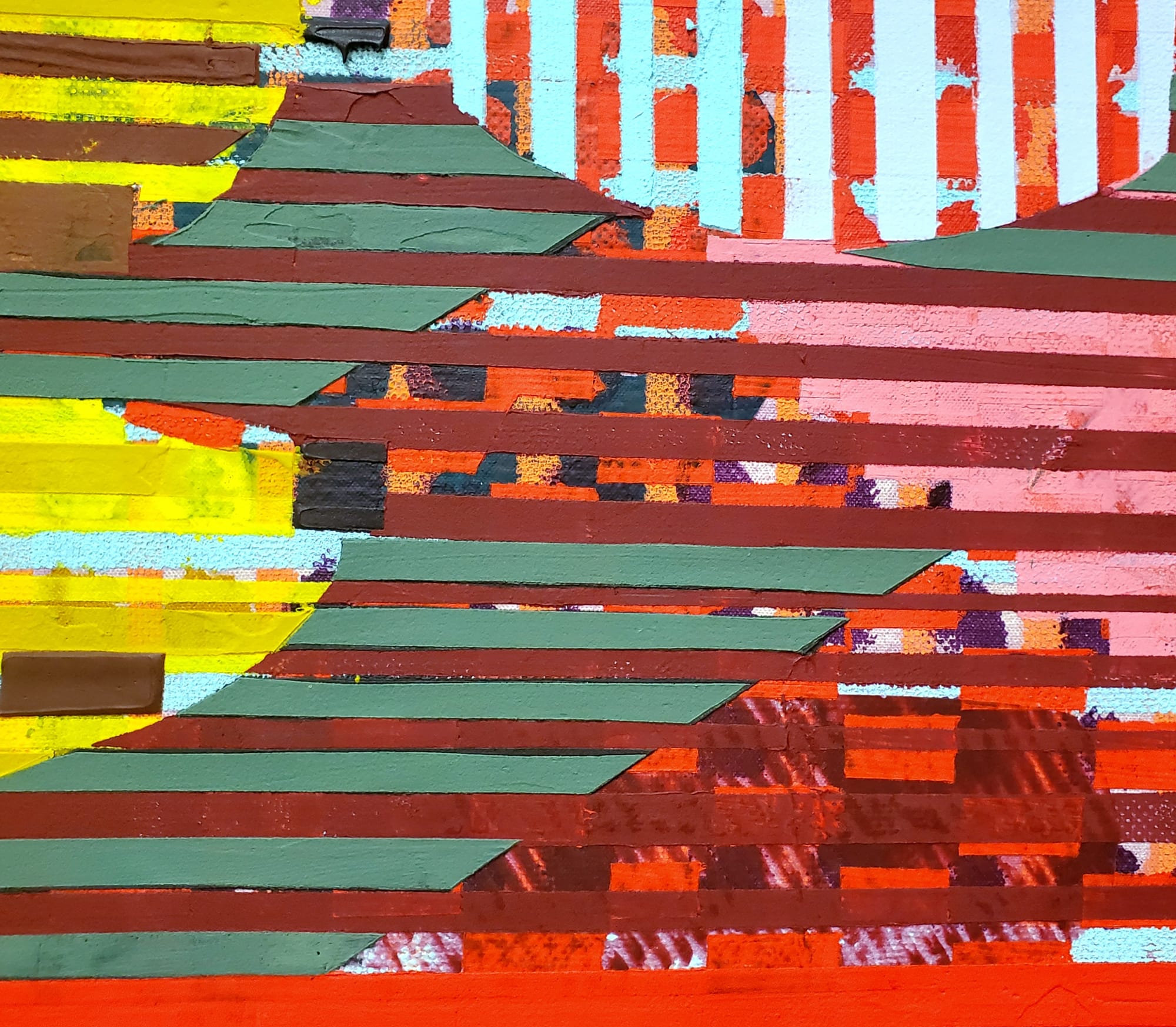
You must be selfish with your time. Be selfish in your plans. Be selfish in your space. If you cannot nail down the regular habit of selfishness, you can’t progress towards bigger and better habits. In a way, being selfish is your first declaration as an artist.
#18 Do the Thing
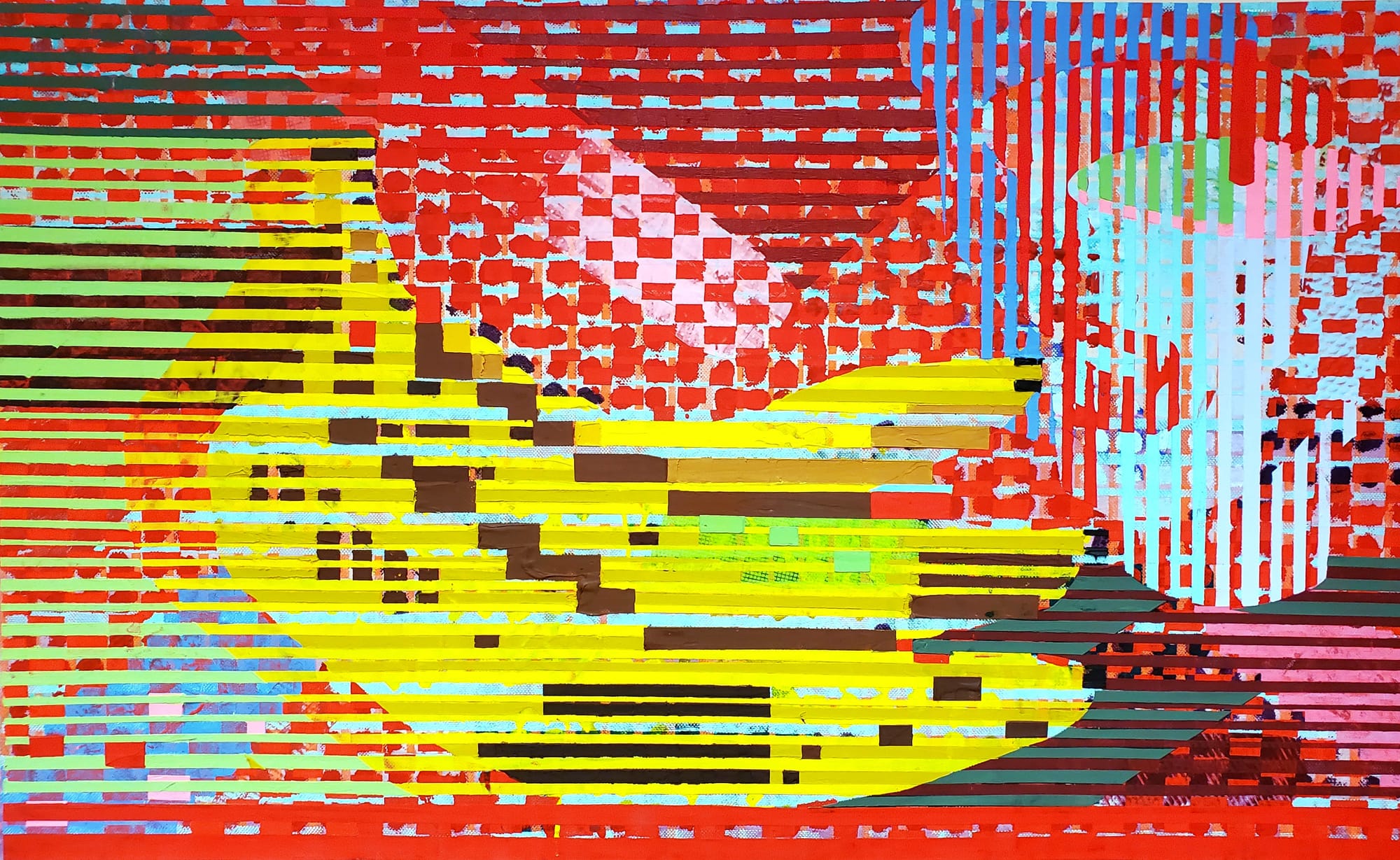
Finally, do the thing.
Win the fight.
Remember, quitters are “done,” artists put a finish on something.
Finish the thing.
The Details
“If I Had It to Do All Over Again"
May 5-July 21, 2024, at the Birger Sandzén Memorial Gallery, 401 N. 1st St. in Lindsborg, Kansas
This exhibition of works by Kevin Kelly demonstrates two of the artist's laborious, complicated “modes of working.”
These are (loosely defined) still lifes and (mostly urban) landscapes. For the fragmented still lifes, Kelly relied on a strict grid system. In contrast, he used layered, gestural marks to build the newer landscapes.
The two groups of paintings reflect his curiosity about the evidence humans leave behind. What, he wonders, do these artifacts say about the community that built and used them? In "Here Forever, Gone Tomorrow," pictured in process in Kelly's essay, the QuikTrip cup is eternal, the bunch of bananas temporal.
After more than 25 years as a studio artist, it's this curiosity that drives him to continue to make paintings. And seeing the work together in the Sandzén, he felt both groups “were addressing different ways of looking at that vacancy.”
Other artists currently showing at the Sandzén include Norman Akers, Greg Biel, and Doug Casebeer. The museum is open to the public from 10 a.m.to 5 p.m. Tuesday through Saturday and 1-5 p.m. Sunday. Admission is free.
Learn more.
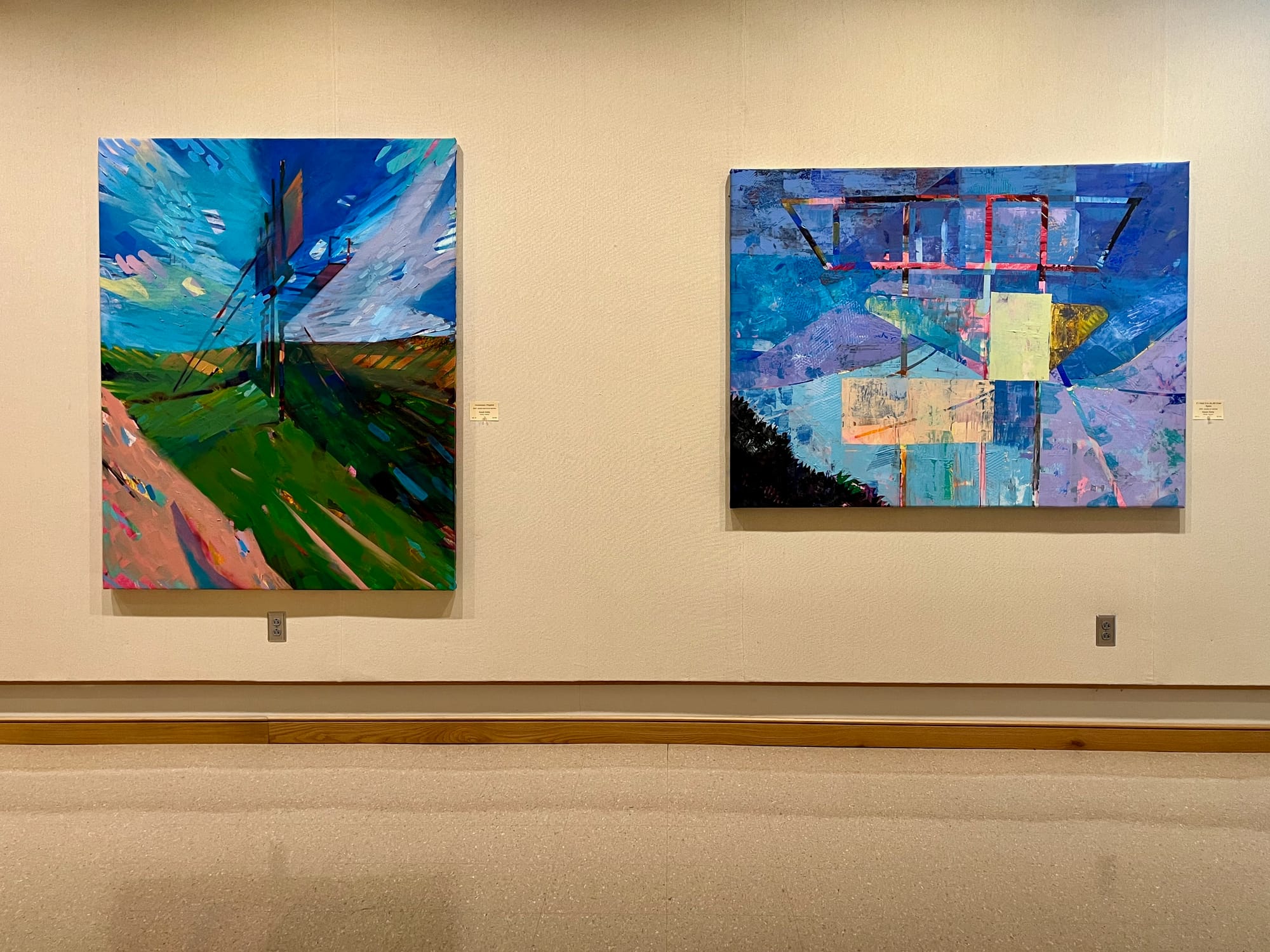
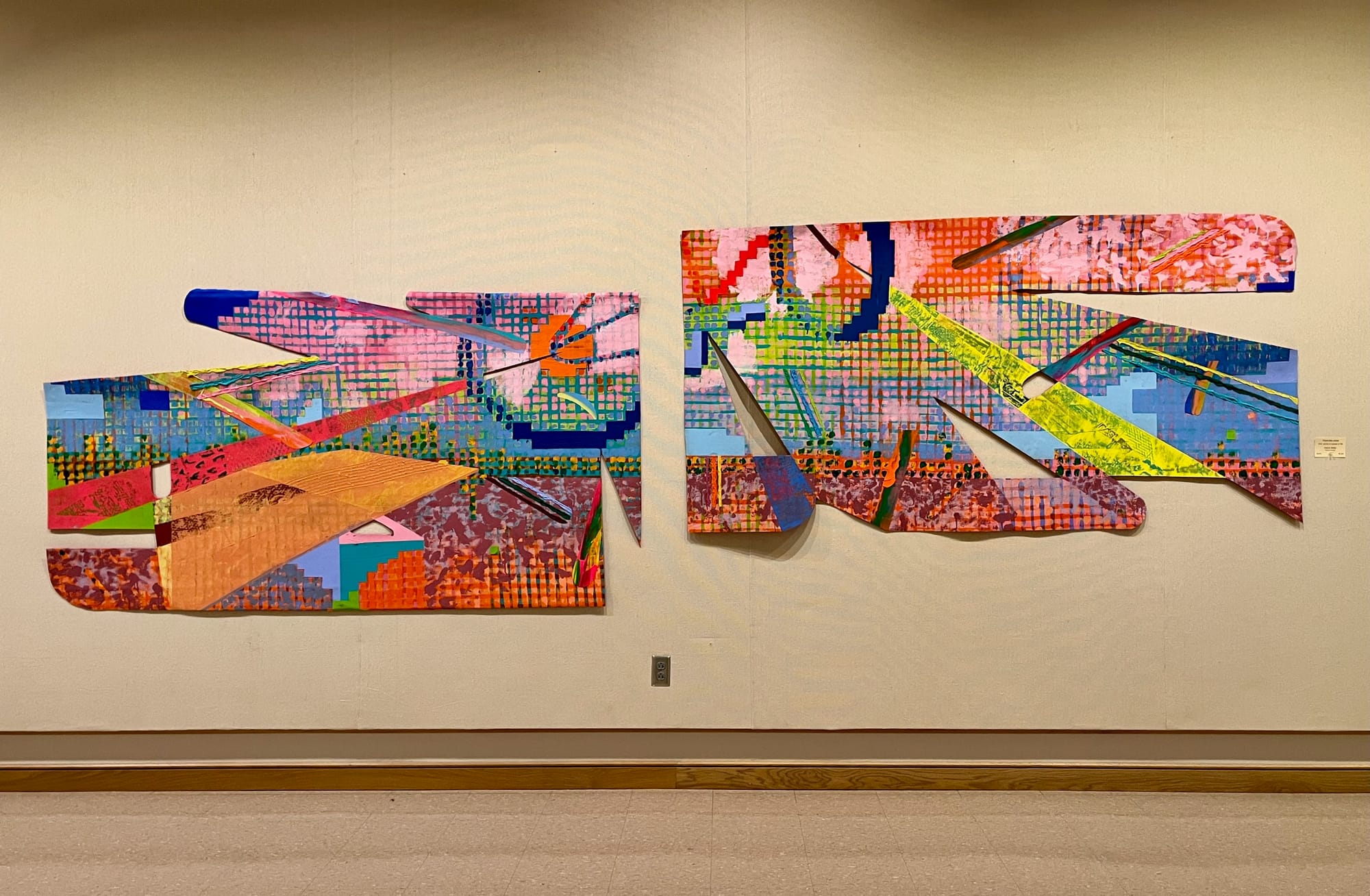
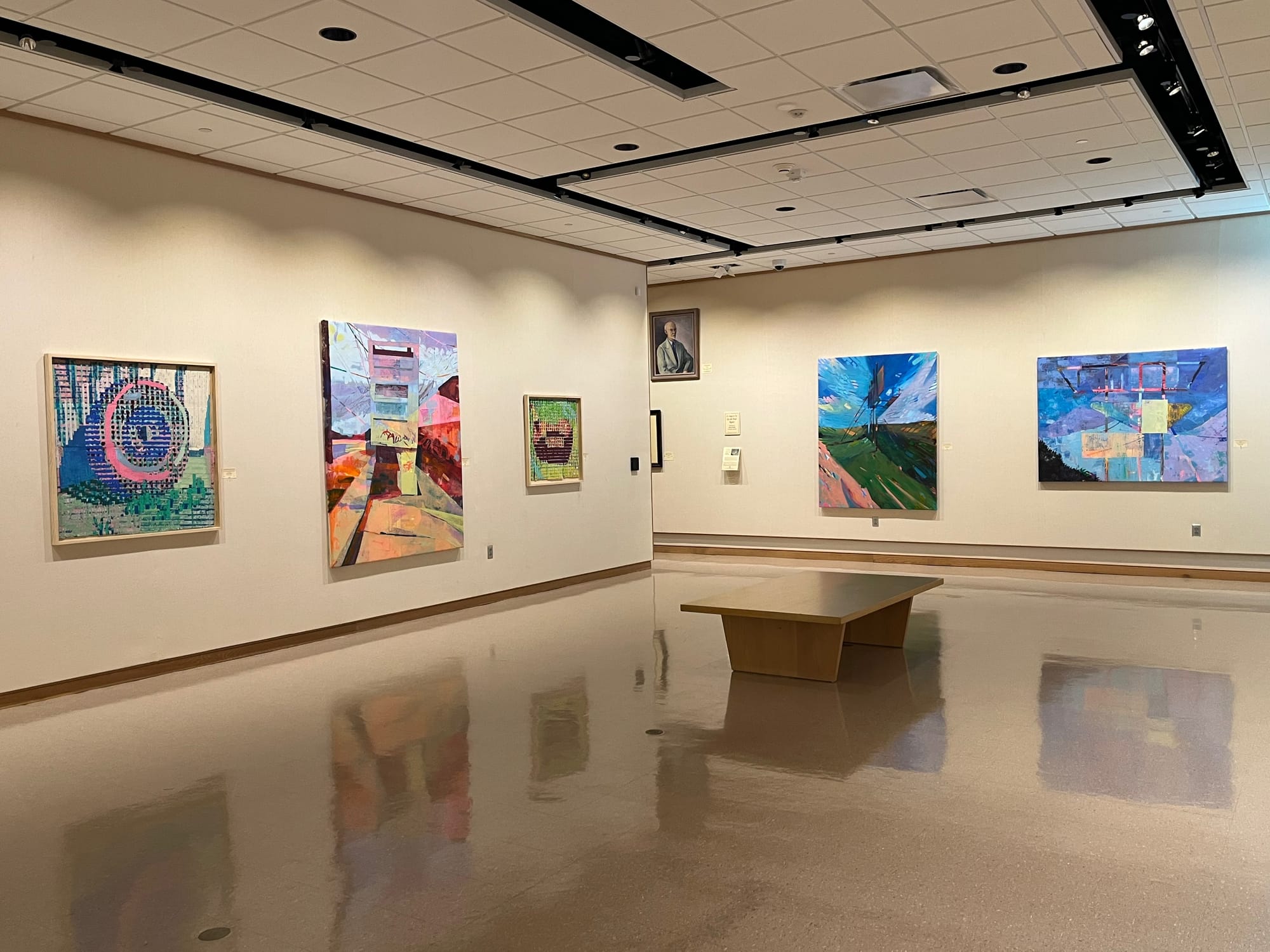
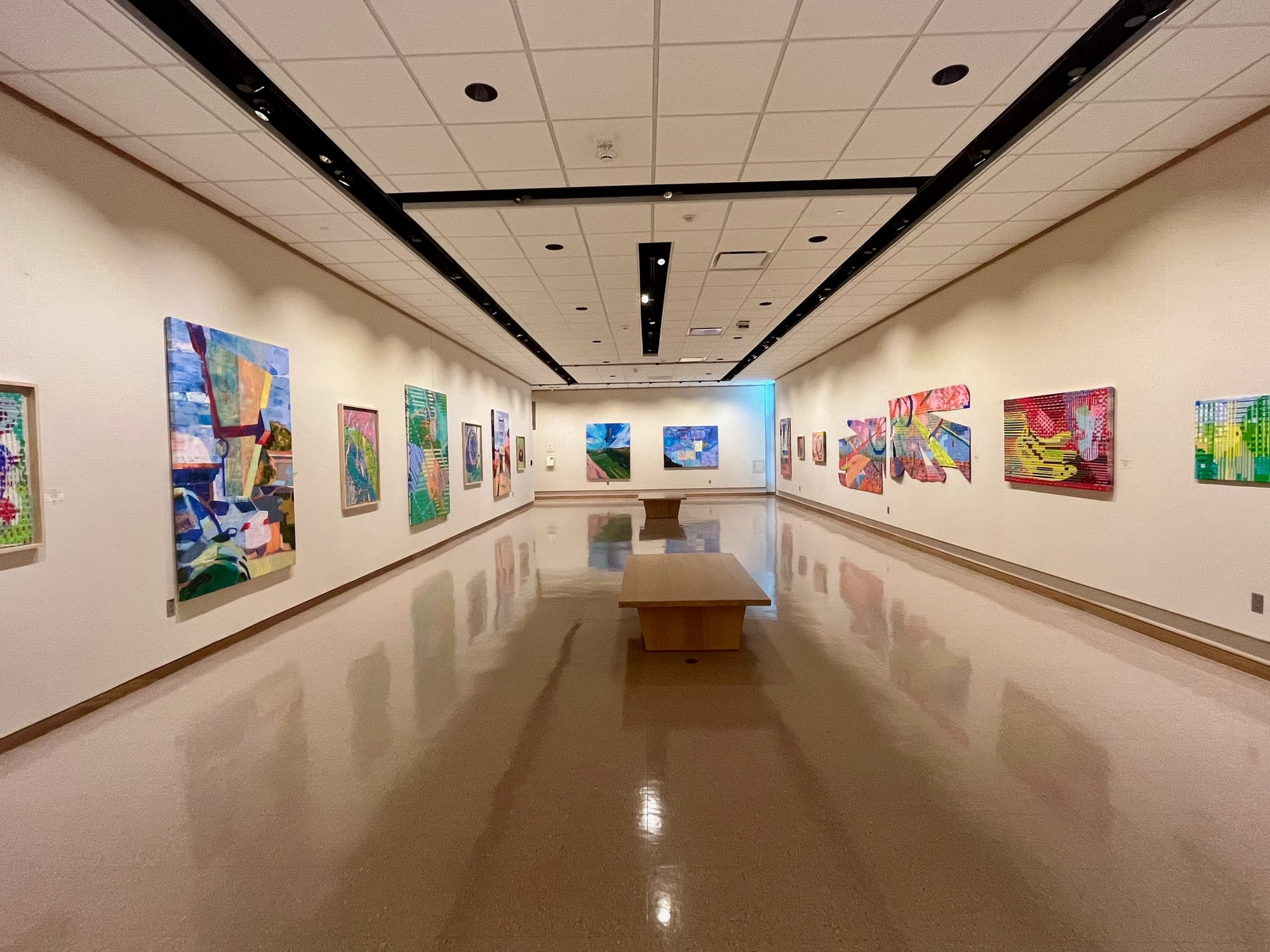
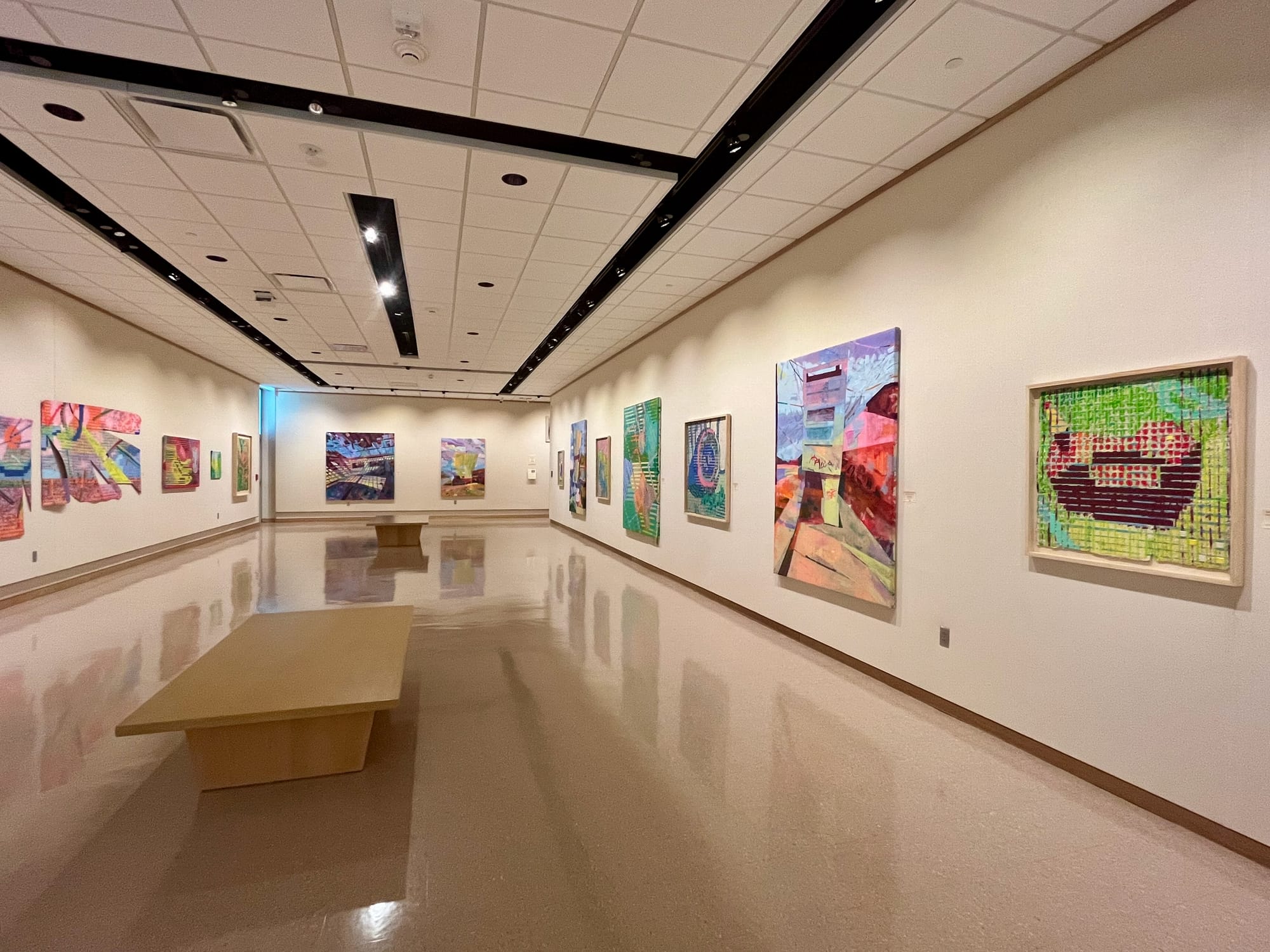
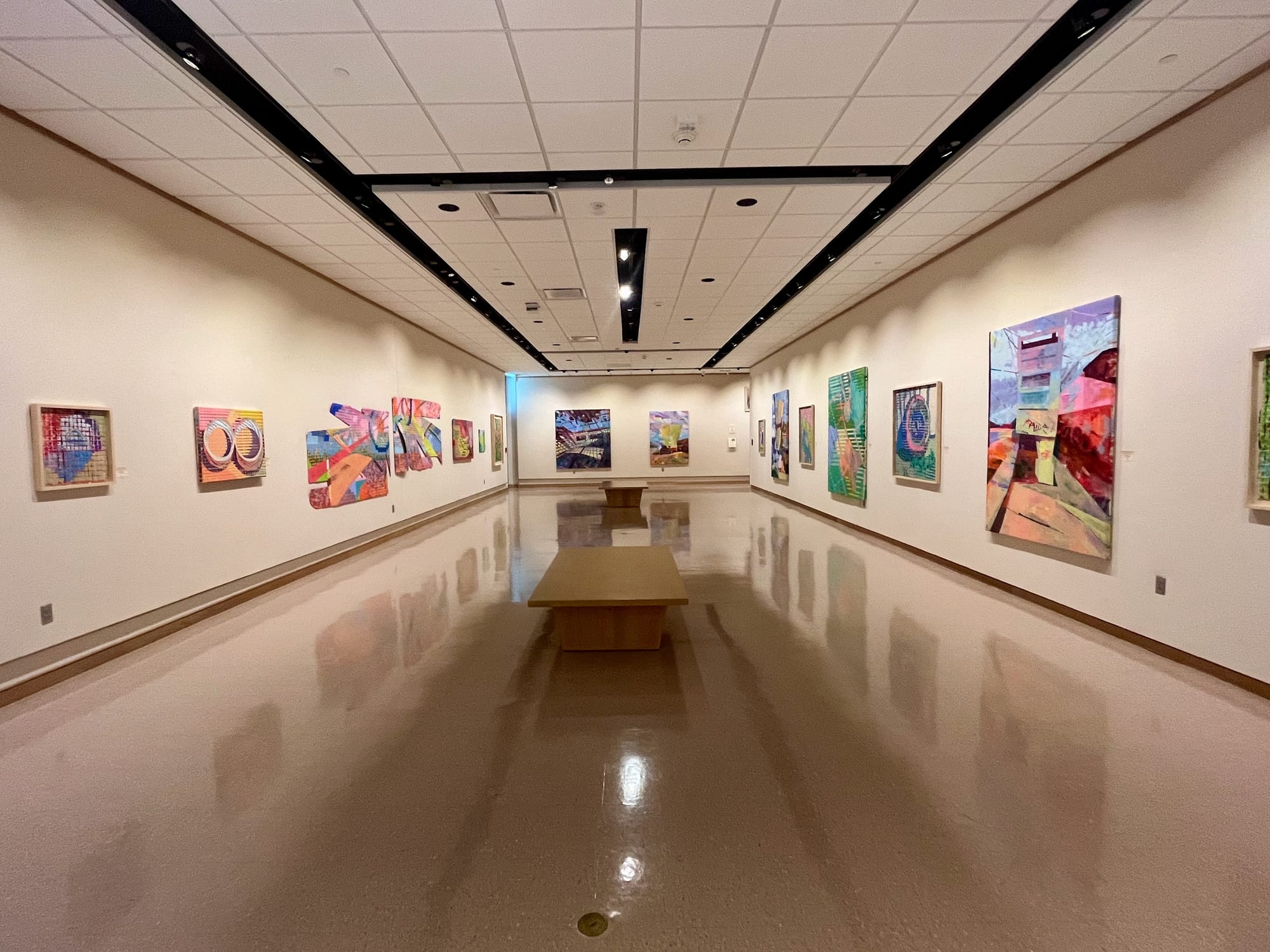
Installation views of "If I Had It to Do Over" at the Birger Sandzén Memorial Gallery. Photos by Emily Christensen for the SHOUT.
Kevin Kelly is an artist and educator from the middle of America. He earned his Bachelor of Art Education in 2001 and his Master of Fine Art in painting from Wichita State in 2008. His artwork is held in many private collections across the United States and has been recognized through the Golden Artist Residency, the Mother’s Milk Artist Residency, the Harvester Arts Community Fellowship program, and the Oklahoma Visual Arts Commission. Over the past 15 years, Kelly’s work has been included in group and solo exhibitions in Kansas, Oklahoma, Arkansas, and New York. His work has been featured in several publications, including New American Paintings, Studio Visit magazine, and the book “Wichita Artists in Their Studios.”
Follow him on Instagram, where you can watch him sneak up on paintings.
Emily Christensen is a freelance journalist and news entrepreneur based in Wichita, Kansas. She is one of the co-founders of the SHOUT.
Support Kansas arts writing
The SHOUT is a Wichita-based independent newsroom focused on artists living and working in Kansas. We're partly supported by the generosity of our readers, and every dollar we receive goes directly into the pocket of a contributing writer, editor, or photographer. Click here to support our work with a tax-deductible donation.
❋ Derby man has the kind of voice that turns heads — and chairs
❋ Socializing while sober: how some Wichitans are cultivating alcohol-free communities
❋ As a small creative business closes, the owner mourns
❋ Painting through it: Autumn Noire on 20 years of making art
❋ How a guy from Wichita resurrected 'Dawn of the Dead'
❋ Bygone Friends University museum housed curious collections



